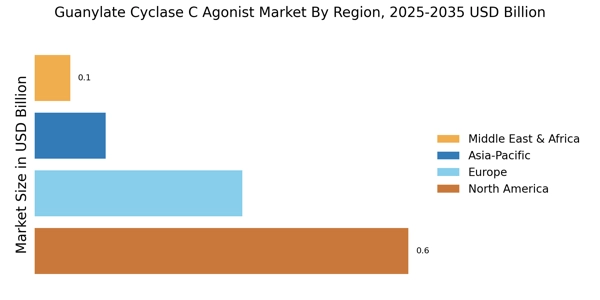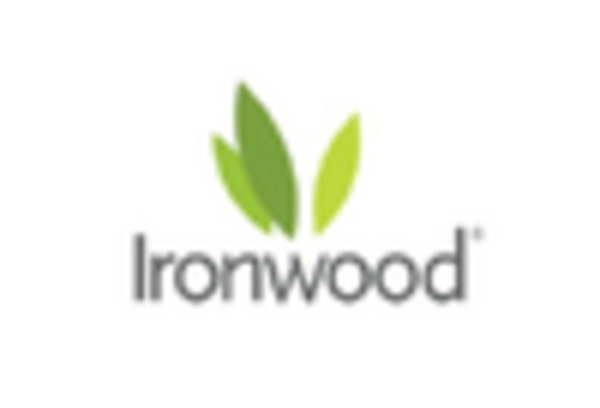Advancements in Clinical Research
The Guanylate Cyclase C Agonist Market is benefiting from significant advancements in clinical research, which are paving the way for new therapeutic options. Ongoing studies are exploring the efficacy and safety of guanylate cyclase C agonists in various gastrointestinal disorders, leading to a deeper understanding of their mechanisms of action. Recent clinical trials have shown promising results, indicating that these agonists may offer substantial benefits over traditional therapies. The increasing investment in research and development by pharmaceutical companies is indicative of the potential for innovation within this market. As new data emerges, it is anticipated that the approval of additional guanylate cyclase C agonist products will further stimulate market growth, potentially expanding the market by 20% in the coming years.
Increasing Demand for Targeted Therapies
The Guanylate Cyclase C Agonist Market is witnessing a notable increase in demand for targeted therapies, particularly in the treatment of gastrointestinal disorders. As healthcare providers and patients alike seek more effective treatment options, the focus on precision medicine has intensified. This shift is driven by the growing understanding of the molecular mechanisms underlying various diseases, which has led to the development of therapies that specifically target guanylate cyclase C pathways. Market data indicates that the demand for such targeted therapies is projected to grow at a compound annual growth rate of approximately 8% over the next five years, reflecting a significant shift in treatment paradigms. This trend not only enhances patient outcomes but also aligns with the broader movement towards personalized medicine, thereby propelling the Guanylate Cyclase C Agonist Market forward.
Regulatory Support for Innovative Therapies
The Guanylate Cyclase C Agonist Market is experiencing a favorable regulatory environment that supports the development and approval of innovative therapies. Regulatory agencies are increasingly recognizing the need for new treatment options for gastrointestinal disorders, which has led to streamlined approval processes for guanylate cyclase C agonists. This supportive regulatory framework not only accelerates the time to market for new drugs but also encourages pharmaceutical companies to invest in research and development. The potential for expedited approvals and incentives for orphan drugs is likely to enhance the attractiveness of this market segment. As a result, the Guanylate Cyclase C Agonist Market is expected to see a rise in new product launches, contributing to an estimated market growth of 12% over the next few years.
Rising Awareness of Gastrointestinal Health
The Guanylate Cyclase C Agonist Market is significantly influenced by the rising awareness of gastrointestinal health among the general population. As more individuals become informed about the implications of gastrointestinal disorders, there is an increasing demand for effective treatment options. Educational campaigns and health initiatives have contributed to this heightened awareness, leading to a greater willingness to seek medical advice and treatment. Market analysis suggests that this trend is likely to result in a surge in the utilization of guanylate cyclase C agonists, as they are recognized for their efficacy in managing conditions such as chronic constipation and irritable bowel syndrome. The growing emphasis on gastrointestinal health is expected to drive market growth, with projections indicating a potential increase in market size by 15% over the next few years.
Growing Investment in Healthcare Infrastructure
The Guanylate Cyclase C Agonist Market is positively impacted by the growing investment in healthcare infrastructure across various regions. Enhanced healthcare facilities and increased access to medical services are facilitating the diagnosis and treatment of gastrointestinal disorders. Governments and private entities are investing in healthcare systems to improve patient care, which includes the availability of advanced therapeutic options such as guanylate cyclase C agonists. This investment is likely to lead to improved patient outcomes and increased utilization of these therapies. Market forecasts suggest that as healthcare infrastructure continues to develop, the Guanylate Cyclase C Agonist Market could experience a growth rate of approximately 10% in the next five years, driven by enhanced access to treatment.


















Leave a Comment